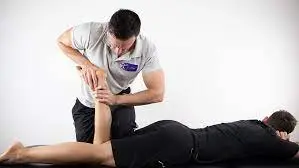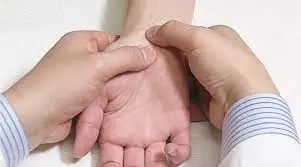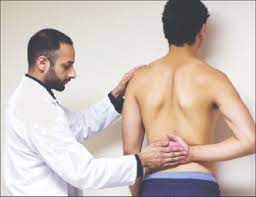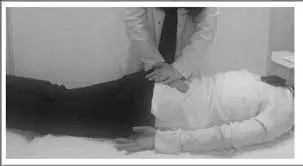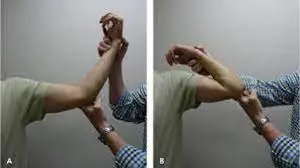Apley’s Test
Table of Contents
Introduction
The Apley Compression test is used to evaluate individuals for problems with the meniscus of the knee. This test is named after Alan Graham Appley (1914-1996), the British orthopedic surgeon who invented this evaluation method. The test is performed in conjunction with the Apley Compression test.
There is a lot of pain and morbidity associated with meniscal injuries, which are fairly prevalent. Meniscal injuries are less common in children under 10 years of age. The incidence is higher in men than in women, probably related to the fact that men engage in more activities that cause rotational injuries (contact sports). No association of race or ethnicity with meniscal injury was reported.
A quick diagnosis is important to ensure the right treatment and a positive outcome for patients. The diagnosis uses a complete physical examination, provocative tests including Apley’s Grind test and Apley’s Distraction test, and advanced imaging such as MRI. Diagnosing meniscal injuries can be difficult because the menisci are vascular and have no nerve supply within them, so there is very little pain or swelling when injured.
Anatomy of the meniscus
The meniscus is a C-shaped cartilage that acts as a cushion between the proximal tibia and distal femur and forms the knee joint. It has an average width of 10-12 mm and an average thickness of 4-5 mm. The meniscus is made of fibro-elastic cartilage. It is an overlapping network of collagen, proteoglycan, glycoproteins, and cellular elements and is composed of approximately 70% water.
Three ligaments attach to the meniscus. The transverse (intermeniscal) ligament is anterior and connects the medial and lateral menisci. Coronal ligaments connect the meniscus peripherally. The meniscus and posterior cruciate ligament (PCL) are joined by the meniscofemoral ligament. The meniscus-femoral ligament originates from the posterior horn of the lateral meniscus. The meniscus receives its blood supply from the medial inferior geniculate artery and the lateral inferior geniculate artery.
As mentioned before, the meniscus is known to have poor blood circulation, especially in the middle part, which receives nourishment by diffusion. For the knee joint, the meniscus’ cartilage structure serves as a cushion or shock absorber. There are several types of possible meniscal tears. These include flaps, radial tears, horizontal tears, bucket handle tears, longitudinal tears, and degenerative tears.
There are two menisci in the knee.
- Medial meniscus
- Lateral meniscus
Indications for use
Clinicians should suspect a meniscal injury when a patient has knee pain, especially after a sprain injury with the foot firmly on the ground. The injury can occur with or without external force applied to the knee. The pain is usually located on the line of the knee joint. Common complaints include pain and mechanical problems such as clicking, sticking, locking, or an inability to fully extend the knee. These injuries often occur with ligament damage. If an external force is applied to the lateral knee, this can lead to an “unfortunate triangle”.
This group of injuries includes injuries to the medial meniscus or lateral meniscus, as well as injuries to the anterior cruciate ligament (ACL) and medial collateral ligament. (MCL). Joint tenderness, joint effusion, and decreased range of motion are the most common findings on physical examination.
What is Apley’s test?
The Apley test is a series of knee and leg movements that healthcare providers use to diagnose a torn meniscus. You may see what is called the Apley powder test or the Apley pressure test. These terms are similar among providers when referring to the same test.
The Apley test is an in-office physical exam, which means your provider can perform it without special equipment or a separate appointment. You will lie on your stomach and your provider will rotate your lower leg to look for pain or other symptoms you feel during movements. The Apley test is usually part of the initial exam when you visit a provider after knee pain or injury. To confirm a torn meniscus or other knee ailments, you’ll probably require at least one imaging test.
Test description
In the Appley grinding test, the patient is placed in a prone position with the knee at a 90-degree angle. After that, the examiner anchors the patient’s thigh to the examination table with his knee. The examiner rotates the tibia laterally and medially, first connecting with the distractor, noting excessive motion, narrowing, or discomfort. The process is then repeated using compression instead of mixing. If the rotation and distraction are painful, or the rotation is increased compared to the normal side, the damage is most likely a ligament. If rotation and compression are more painful, or rotation is decreased compared to the normal side, the damage is most likely a meniscal injury.
Reliability of the test
Many studies have attempted to measure the reliability of various physical examination findings. A prospective study comparing preoperative joint tenderness with arthroscopic findings of meniscal tears found sensitivities of 86% and 92% for joint tenderness and overall accuracy of 74% for medial and 96% for lateral meniscus. another study found similar results, with a 74% sensitivity for common line softness.
The only significant McMurray sign that correlated with meniscal injury was a raised “bump” in the medial joint line and a medial joint tear. However, others found that the McMurray and Apley tests had a sensitivity of less than 75% in diagnosing meniscal tears.
Test sensitivity
Studies of the diagnostic accuracy of meniscal tests have been described as having poor methodological quality and very heterogeneous results, and therefore of poor value in clinical practice. According to a recent meta-analysis, sensitivity and specificity are 60% and 70%, respectively.
Clinical Significance
Diagnosing a meniscus injury through a physical exam and special tests, including the Apley grind test and the Apley distraction test, along with advanced imaging can help your doctor provide the right treatment. Treatment of a meniscal injury may include conservative treatment such as analgesia, i.e., anti-inflammatory medications and physical therapy.
Non-surgical treatment is the first line of treatment for a degenerative meniscal tear. Surgical repair of a torn meniscus is often recommended for peripheral tears because of the abundant blood supply. Conservative treatment or surgical correction largely depends on the specifics of a particular case.
FAQ
What is Apley’s test knee?
The technique used to assess meniscus damage is referred to as the Apley grind test, Apley compression test, or Apley test. It is typically done in combination with the Apley distraction test, which evaluates ligamentous damage, by clinicians.
How is Apley’s test done?
Position of the patient in the prone position before starting this exam. Then fix the tested leg with your leg and bring the knee to 90° flexion. While distracted, perform tibial and medial rotation. Looking for excessive turning to one side or discomfort.
What is the specificity of the Apley test for knee tenderness?
Studies of the diagnostic accuracy of meniscal tests have been described as having poor methodological quality and very heterogeneous results, making them poor for clinical practice. According to a recent meta-analysis, sensitivity and specificity are 60% and 70%, respectively.
What is the Apley test vs McMurray?
The difference between them is what specific moves they use. During the Apley test, you lie on your stomach while the provider moves your knee. If you require a McMurray test, you will need to lie on your back while the medical professional bends and moves your knee.
What is the validity of the Apley test?
Apley’s test, which is used less often, has a sensitivity in the range of 13! 60 and specificity ranges from 70 to 93%. All of these studies of diagnostic accuracy used arthroscopy as the reference test. Arthroscopy is considered the standard for diagnosing meniscal tears.
Reference
Apley’s test. (n.d.). Physiotherapy. https://www.physio-pedia.com/Apley’s_Test
Apley’s Grinding Test. (2021, January 21). In Wikipedia. https://en.wikipedia.org/wiki/Apley_grind_test
Agresti, D. (2023, April 29). Apley Grind Test. StatPearls – NCBI Bookshelf. https://www.ncbi.nlm.nih.gov/books/NBK470549/
Knee Orthopaedic Test: Apley’s Test. (n.d.). https://www.matassessment.com/blog/apley’s-test

